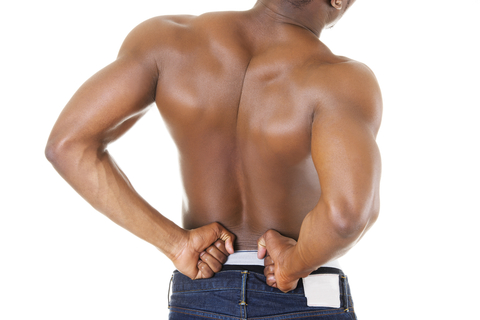
Maybe your back or knee pain is not back or hip problem.
Maybe it’s a back or knee result.
We grow up with what we call a structural model of pain.
As a kid, we fall off our bike and skin our knee. The knee hurts and it’s pretty obvious as to why considering you just whacked your knee on the ground.
From this perspective, any pain we feel seems to be a problem with that area.
Back pain = back problem.
Knee pain = knee problem.
If I may offer an alternative perspective.
Let’s use my go-to explanation for many pains we experience. I call it the Hard Chair Analogy.
Sit on a really hard wooden chair… for 5 hours. Don’t move. Don’t fidget. Don’t get up… at all.
Eventually, your butt will hurt.
Is it because your butt is broken or damaged? Of course not. It’s just too much pressure in one place for too long a period of time. The pain is a signal to you that there’s too much pressure in one place. Once you get up off the chair, the pain magically disappears. The problem of too much pressure is solved, so the need to be made aware of the previous pressure is no longer needed. No more pain.
You back or your knee pain may be exactly the same thing.
It’s not uncommon to see movement limitations in areas of the body that may restrict or increase stress via too much pressure or tension on other areas of the body.
For instance, a limitation in hip motion may promote a position of your back that increases joint pressure or muscle tension that, like sitting on a hard chair, is too much or too prolonged and you get a message from the brain in the form of pain that you need to take the pressure off.
But what if you don’t know how to take the pressure off. Well, obviously the pain will persist.
A common finding in people with either back or knee pain is a lack of hip rotation or increase muscle activity on the back of the hip in the buttock region. This lack of access to normal hip movement has a number of causes, but rarely is it the result of a change in the structure of the hip or true changes in the muscle length. Most of the time, the position of your entire body keeps the muscles active in that area and blocks the hip motion.
In the clinic, we’ll measure the hip rotation as in the photo below.
You can get a similar self-test of your own hip motion by using the position shown in this photo.
You may feel a limitation in movement or a pinch in your groin area if you compare sides.
To restore hip motion for people who can remain somewhat active but still have some back or knee pain, we can use the simple half-kneeling exercise progression shown below.

- Follow these instructions:
Kneel down on one knee with the “tight hip side” up.
Start by reaching down and pushing down on block/step/stack of books or anything stable with your right hand as your breathe comfortably in through your nose and completely out through your mouth for 2-3 sets of 5-10 breaths.
The build up should keep you in a pain-free position at all times, so build it up as high as you need.
The goal is to progressively improve your ability to reach the floor.
Once you reach the floor, progressively work to get both hands down and pushing into the floor following the same breathing instructions as above. Always breathe through the exercise and don’t hold your breath at any time.
Once you can push effectively with both hands, switch to the left hand only position as pictured and follow the same breathing instructions.
Retest your hip.
You should NEVER feel pain with this activity.
If you do feel pain, this activity is not for you. At least not yet.
Always keep in mind that humans are complex. There a many potential influences in regard to your back or knee pain, and this may be one of many possible solutions.
If you’re still dealing with back or knee pain and are seeking a solution, IFAST Physical Therapy is offering a free injury consultation. Each week we keep a few appointments open for you to come in and speak with our physical therapist to answer your questions and to see how quickly you can change. To get you appointment scheduled, please call IFAST Physical Therapy at 317-578-0998 or email us at [email protected].


0 Comments
Join the conversation